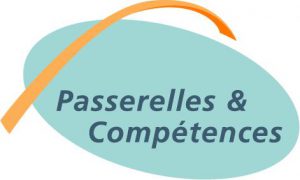

COMMUNICATION STRATEGY
It is used to define the tools and actions required to achieve credibility and visibility.



TEXT
It enables the creation of quality media that conveys a clear message and is appropriate for the various communication tools.



TRANSLATION
It enables information to be understood in other languages.



PHOTO-REPORT
It enables field work to be enhanced through the impact of quality images.



ILLUSTRATION
It provides a visual representation that enables the work of the organization to be communicated. An alternative to photography.



LOGO
They represent the organization’s visual identity and facilitate its recognition among the general public.



WEBSITE
It is the essential showcase for the organization: easily created with the widest visibility.



FLYER, LEAFLET
They enable the organization to communicate with a defined target audience in a way that leaves a lasting impact.



DISPLAYS, ROLL-UP
They promote the organization and its activities via events or campaigns.



REPORT, PAMPHLET
They summarise and communicate the annual activities or priorities of the organization.



NEWSLETTER, SOCIAL NETWORKS
They provide an opportunity for the organization to communicate periodically with its public.



DOCUMENTARY, VIDEO
They provide a visibility that complements and brings to life the activities of the organization.


![]()
A communication strategy makes it possible to develop clear and coherent communication. It defines all of the communication activities, their timing, and the mediums of communication. This will enable the maximum effectiveness to be obtained regarding the objectives that are set for a given target audience, according to the allocated budget. The strategy’s action period is established over the long term (2 to 5 years), which allows for consistent results and a time for the general public to assimilate an image. From the first year, some concrete actions related to the overall strategy are put in place. A communication strategy can develop very varied elements:
A well thought out strategy makes it possible to align one’s communication as close as possible to one’s needs, and to make the right choices in terms of tools and communication mediums. This is especially important when the budget allocated to communication is not a priority for an organization that is trying to develop. The goal is to define, structure and coordinate the different activities and items that will be created. This makes it possible to obtain an overall vision of the activities that will be deployed over the year (website, events, press, etc.) and to control the timeframes, budget and creative process.
The target audience, or the target, is the population that one wishes to reach through a communication activity. An organization can have several target audiences (beneficiaries, donors, etc.) and personalize its message according to the target audience to increase the effectiveness of its communication.
Marketing, mainly used in the private sector, can be defined in the non-profit sector as the analysis of the needs of the target audience and all the ways that could be used to influence their behavior (becoming a volunteer, making a donation, etc.). Marketing adds value to the organization’s activities for the target audience
Branding, mainly used in the private sector to define the brand, can be explained in the non-profit sector as the discipline of managing an identity, the culture of the organization, and in particular, the image that will be disseminated.
Values refer to the moral and practical ideology of the organization. They are generally inspired by the strong motivations that initiated the creation of the organization and are perpetuated in all its activities. Courage, respect, commitment, neutrality, or any other example of values, will help develop the image, reputation and identity of the organization.
The vision defines the dream, the ideal to be achieved (it corresponds to the question – Why does the organization exist?). The mission explains the means, the concrete actions undertaken to attain the vision (this corresponds to the question – How to achieve the vision?).
To create a well-aligned communication strategy, it is necessary to carry out an in-depth examination of the identity of the organization (its fundamental values, vision, mission, priority objectives, etc.) in order to develop an image and a strong and fitting message.
It is unusual for an organization to want to reach a single target audience, but we strongly advise prioritizing communication needs. Wanting to reach everyone or target audiences that are too varied can make a strategy too complex and difficult to achieve.
This will give clarity of the different tools, and the different steps to be implemented. Planning must be respected to implement a strategy, as must the time needed to devote to it, and the associated human, and ultimately, financial resources required.
Once the strategy is launched, it is important to be attentive to feedback from partners and beneficiaries, but also social media, blogs or forums. These will enable you to adjust strategies and messages in future communication projects.
Download the attached PDF to help you define your communication strategy.

![]()
In communication, the process of writing a text is developed in several stages according to the different communication mediums. The goal is always to convey an accurate and clear message following consistent guidelines, but each medium requires specific work.
The signature, or tagline, is a short and unchangeable phrase that is associated with the logo. It represents a commitment and often gives complementary elements to the visual part of the logo. When the logo is an acronym, the full name is generally used as the tagline. You can also choose to put a short sentence or a few keywords that reflect the spirit of the organization.
The catchphrase or slogan is not necessarily directly related to the logo. It is a concise and original phrase that aims to embed the name of the organization in the consciousness of the general public. In most cases it translates, in an impactful way, a state of mind, a “philosophy.” It must highlight the originality or the strength of the organization. It can be temporary or linked to a precise communication campaign on a specific activity. It gives information that is more impactful and can take different aspects and/or tones that are more or less serious depending on requirements.
A body of text is the argument of an advertisement, the text of a flyer, a brochure, or a website. Even though it is less “spectacular” than the catchphrase, it must be correctly written and follow precise rules. A common logic of structuring and a hierarchy of contents will have to be developed for all media. The information can then be more or less detailed depending on the format and estimated reading time.
In writing the texts, it is important to remember that the reader often does not know anything about your organization and the theme being addressed. It is therefore necessary to explain the different elements in a simple and organized way.
The editorial content of the website is very important in two aspects:
The job of a copywriter is principally to write appropriate and effective texts. Therefore, if you can, do not hesitate to entrust the writing of your texts to professionals.
For anything printed, it is important to ensure it is accurately proofread. There is always an error that escapes us that we risk neglecting, especially on the titles. The ideal is to read out loud the finalized product to a person who did not participate in the design.
Download the attached PDF to help you define the structure of your brochure. Download the attached PDF to help you define the structure of your website.

![]()
Translation is the conversion of a text into another language. It is useful when the visibility of the organization is growing and communication media need to be readable in other regions, countries, or internationally. Professional translators are true authors. Their expertise enables the essence of the message to be maintained in the desired language, with the appropriate terminology and style. Be careful, because poor quality translations can damage the image of the organization.
It is important, when making a request for translation, to be aware that there are different possibilities available in this area.
Online translation software, offered by major search engines, is useful for understanding certain texts. They cannot in any way substitute for a professional translation when creating communication media.
A literal translation exchanges the original language word for word. The elements of the sentence are rearranged to create a grammatically correct sentence in the target language. This type of translation is ideal for informative texts.
This quality of translation is essential for literary texts. The translated texts are recreated to fit the culture of the destination language, while maintaining the original idea of the text.
If there are no other possibilities than automatic translation, it is important to indicate on your media that the translation was made by these programs and this may have distorted the original message and may explain some errors.
In order to avoid unpleasant surprises, it is best to ask the professional for examples of translations in the desired language before starting the collaboration.
Each translator has experience in the field and the terminology that goes with it. They will therefore advise you on the type of translation most recommended for the work to be done.

![]()
Quality images form part of the foundation of communication. They help reinforce the identity and bring a complementary, more visual message. In general, photos primarily distribute a concrete or symbolic image of reality. Engaging a professional for the work makes it possible to generate a set of tailor-made photos, adapted to the needs of the organization.
A photographic report is comprised of a series of photos taken in the field. Depending on the themes, the subjects may vary: portraits, activities, actions, team and locations. This type of photography shares a strong notion of reality, testimonials, of concrete facts.
These are photographs that are not taken on the spot, as during a report, but during a session prepared around a theme or concept previously defined. This session can take place in a studio or outside. The photos of a photo shoot often carry a more conceptual and symbolic message.
These are already existing images. They have not been specially produced for the organization and can be purchased. The use of an image bank is not highly recommended because it gives a very impersonal result. The proposed images are often clichéd and generic so they can be used by as many people as possible. They are rarely free and the copyright payments vary according to their use.
During a photo report or a photo shoot, it is imperative to have a signed authorization by the people who appear on the photos (see authorization template).
The images produced are subject to a rights agreement that defines how the photos can be used by an organization. The photographer as author keeps the ownership of the created images.
The organization of a photo report or photo shoot requires considerable preparation beforehand, mainly regarding operational requirements (accommodation, permissions, subjects, studio and equipment). It is important to work closely with the professional to agree on these different aspects together.
It is also important to think ahead and list the elements, the subjects and the places that are required for the report or the photo shoot. For this reason we recommend the creation of a photographic mission brief which describes all of the elements to be photographed and the conditions (for example, if the people do not want or must not be recognized on the images). Download the attached template for a photo brief Download the attached template to create a contract for a photo report Download the attached template to create an image rights authorisation

![]()
Quality images are part of the foundation of communication. They help to reinforce an identity and bring a more visual complementary message. Illustration makes it possible to promote projects based on more theoretical, more complex notions. It also provides an effective way to express violent themes or to represent people in a simplified way, without gender or ethnicity, in order to engage a wider audience. The use of a professional enables a set of illustrations to be tailored to the needs of the organization.
Overall, illustrations can be developed in a variety of styles, layers of colors, attributes, rhythm, etc. Moreover, the same subject will not be received in the same way depending on the tone that is used: humorous, romantic, serious, journalistic, etc.
A drawing can visually represent, in two dimensions, characters, landscapes, objects or, in a more abstract way, a concept, an idea, a sensation, an emotion.
Comics can tell a story through a series of drawings, and texts that are mainly made up of dialogues and comments. It can be reduced to a single line (or a strip) or develop over many pages. Therefore, it makes it possible to illustrate a scenario that evolves, and it can be more or less realistic according to the subject.
Infographic illustrations mainly use graphics, numbers and pictograms to portray an image of more detailed information.
The use of an image bank is not a highly recommended solution because it gives a very impersonal result. The proposed images are often very cliché and generic in order to be used by the greatest amount of people. They are rarely free and the rights to the image vary according to their use.
In a standard collaboration, the illustrator, as author, retains the rights to the created images. Arrangements regarding the use of the images may be written in a contract signed between the two parties. (refer collaboration contract)
It is important to think ahead and list the elements and the topics that need to be illustrated, as well as the style and tone that should be used. For this we advise creating a brief that describes the number, subjects and conditions (color illustrations, desired size, etc.). Download the attached PDF to help you define your illustration brief

![]()
The logo (or logotype) is the foundation for visual communication by any entity. It is the graphical representation of an organization. It may be purely typographic, using only printed characters, modified or not, or it can be completed by a visual element, sign or symbol. This symbol will represent something about the organization, its likeness or convention. It can take many forms. It can be an ideogram or a pictogram. An ideogram is a sign that represents a concept, and therefore uses symbolic signs for abstract terms. A pictogram is the extremely simplified representation of an object, a place, an activity, a particular point, a characteristic, or more concrete notions.
The visual identity principally consists of:
It can also be a certain style of images, photos or illustrations, layouts, a type of paper, etc. Respecting all of these visual elements will contribute to the creation of a strong visual identity that is recognizable and aligned with the culture of the organization.
This is a comprehensive document that presents all of the elements that make up the graphic identity and their rules of use. For example, presenting your logo with the right colors is not enough. It will also be necessary to ensure that it has the right proportion according to your formats and the correct positioning within those format. This document will be entrusted to all the professionals who will work on expressing the identity of the organization, for example, to create a leaflet, create a site, or cover a vehicle, in order to guarantee an overall graphic coherence.
Stationery refers to all of the “administrative” documents that will provide professional communication about the organization: business cards, letterheads, envelopes and compliments cards.
In order to facilitate the task of the graphic designer who will create the logo, it is necessary to give them information about the organization, and to provide clear and precise specifications. The more information about the organisation and its needs, the freedom of the creative parameters, and the directives that must be explicitly adhered to, the more the collaboration will be fruitful.
The logo is the basis for all of the communication by an organization. Therefore, it is strongly advised to collaborate with a graphic designer to improve or create a quality logo, which will be able to clearly communicate the identity of the organization and guarantee the logo’s longevity/durability.
It is advisable to focus on logo design at each stage of the creative process in order to choose the most suitable options and develop it to a final product that most closely represents the image of the organization.
When choosing the logo, it is advisable to carry out a verification process to ensure the logo is original and that it does not look like another that already exists. For a first verification of the originality of the images, you can import the image of your logo into “Google images” and look at the results of the search by image.
Once the final logo is agreed upon, it is desirable to gather together all of the versions and variants of the logo, ideally in the form of a graphic chart. Then you will have the files for each communication medium (social networks, printed media, etc.) and validated adaptations by the graphic designer. Download the attached PDF to help you define your logo brief.

![]()
An internet site, website, or simply site, is a set of virtual pages and resources linked by hyperlinks, and defined and made accessible by an internet address. All websites constitute the World Wide Web. The website is a medium that is accessible to everyone and often creates the first impression of an organization. The structuring of information, as well as the images and the design of the site, are all elements that, if mastered, will convey a professional and reassuring message.
The domain name is the internet address (also called URL). It is the name and extension which the visitor must enter to view the site (www.example.com). The domain name is rented from registration companies annually or for several years. The host is the physical storage space of your website. Companies lease secured spaces on their servers, which remain connected 24/7. These ensure the site will be displayed without interruptions. There are several types of host, more or less expensive, which can be chosen according to the size or the features of your site.
A template is a theme that determines the graphic appearance of a site, regardless of its content. This includes, for example, the layout of the columns, the choice of colors, the font, the structure of the different elements on different media (smartphones, tablets, computers), etc. The CMS (Content Management System) is a system for managing the content of a site (text, images, functionality, etc.). WordPress is a free CMS that is currently the most popular and the most used. Once the site is created, this system enables access to administer the site, which is a relatively simple way of updating the content.
An adaptive website is a website whose design enables, thanks to various principles and techniques, an easy engagement with the site via different media (computer, tablet, phone). This aspect has become essential to improve the referencing SEO of the site.
The referencing of the site (also called SEO, Search Engine Optimization) aims to improve your ranking in search results such as Google (but also Yahoo, Bing, etc.) to increase traffic visitors on your website. 75% of internet users find information starting with a search engine. It is optimized by working with structure, terminologies (titles, etc.) and text content.
It is important to choose a simple, direct domain name related to your organization’s name. The extensions, “.org” and “.ong or .ngo”, are usually used for non-profit organizations. It is possible to have several extensions, and several web addresses, which point to the same site. It is advisable to check the availability of the desired address as soon as an organization is created. Sites such as www.ovh.com/order/domain or www.name.com allow access to available addresses and prices (prices may vary depending on the extension chosen).
The main structure of the site (number of languages, home page, types of menus, etc.) must be decided upon from the start according to the content that will be featured. The elements that will have to evolve must be highlighted and taken into account in order to facilitate the future updating of the contents by the organization (see structure model to download below)
Download the attached PDF to help you define the structure of your website.

![]()
Flyers and pamphlets are printed communication mediums. They are of a smaller size and intended for a wide audience. They can be distributed at shows, events, in the street, in mailboxes, and be available in cafes or public places, or in newspapers. Their main purpose is to publicize the organization, a specific project or a specific event.
Also referred to as a handout or pamphlet, this is a paper document usually in an A5 or A6 format, printed single or double-sided. A flyer is often used for an activity with a short duration (event, etc.). Its content is simple, direct and schematic.
A pamphlet is usually the printed reference document for presenting an organization. It can be in different forms, with several pages. The standard formats are: 4-page A5 (folded A4 sheet in two panels), 6-page (3-panel, 2-fold), or even an 8-page (4-panel, 3-fold). The number of components is chosen according to the amount of information that will need to be included. These two media are relatively cheap. Up to a print run of about 1000 copies (micro-edition), we would choose a digital print. Beyond that, it is better to print in offset. For pamphlets, it is necessary to take into account an additional cost generated by the finishing (folds and cuts).
For anything printed, it is important to ensure it is accurately proofread. There is always an error that escapes us that we risk neglecting, especially on the titles. The ideal is to read out loud the finalized product to a person who did not participate in the design.
If the pamphlet (or flyer) is intended to be sent by post, it is advisable to inquire about the costs depending on the format. Usually the A5 format is in accordance with standard postal regulations, and it would be better not to exceed the dimensions of 14.85cm x 21 cm.
Download the attached PDF to help you decide upon the layout of your pamphlet.

![]()
Posters and roll-ups are primarily large printed communication media. The goal is to attract attention, to generate the interest that will encourage the visitor or passer-by to want to know more. The visual aspect is the priority, the detailed information is secondary. It is therefore necessary to work with an appealing photo or illustration, not too complex, with strong contrasts, or with a powerful typographic composition: a very short sentence created in a rather bold font that forms a harmonious design while being very readable.
A poster is intended to be printed in multiple copies and placed on fixed locations (display boards, walls, windows) or mobile locations (vehicles). It is a medium that is commonly used during general public campaigns. A roll-up is a removable device, placed on the ground. It is able to stand on its own to support a reasonably large visual (around 1m x 2m). It may form part of a display or a room. Unlike the poster, it is reusable. As it is placed on the floor, care should be taken to locate the important information (logo, slogan, etc.) on the upper half of the composition.
– As these are large formats, it is necessary to ensure that the resolution of the images used is sufficient (depending on the medium, ask the printer for the optimal resolution beforehand).
For anything printed, it is important to ensure it is accurately proofread. There is always an error that escapes us that we risk neglecting, especially on the titles. The ideal is to read out loud the finalized product to a person who did not participate in the design.
– Before making a poster it is important to undertake research regarding the availability and costs of displaying, as well as printing, in order to decide upon a strategy that is best suited to the goals of the organization.

![]()
A brochure, also known as a “report”, “prospectus”, “publication” or “booklet”, is a paper document that consists of several pages (at least 8 pages) that are printed together. Its format, as well as the choice of paper, is variable, adapted according to its purpose, content and affordability. A report is a type of brochure, often used by organizations for annual information (Annual Report), or to inform about the activities of a specific project. These communication tools are usually used for fundraising or partnerships.
This document contains the complete information about an organization and its activities, or about a chosen project. The structuring and the hierarchy of the contents are important so as not to lose the reader. A summary is often used in the introduction to present the different contents. A brochure is often rich in illustrations or photographs.
Printing this kind of document can be expensive. It is important to consider this at the design stage. With the help of the graphic designer and the printer you can decide on the format, the number of pages, and the colors that allow the best balance of quality and price. Knowing the means of distribution and the target audience will also help in the consideration of the most suitable options.
An annual report, for example, will often have a similar structure from year to year. It may be wise to establish initially with the graphic designer a design that can be reusable in subsequent years by just adapting the content of the text and images.
For anything printed, it is important to ensure it is accurately proofread. There is always an error that escapes us that we risk neglecting, especially on the titles. The ideal is to read out loud the finalized product to a person who did not participate in the design.

![]()
A social network is an exchange and sharing web platform, bringing together an international public consisting of legal entities (companies, political parties, humanitarian organizations, etc.) and individuals (individuals). Social networks have become an essential communication tool because they help to build and maintain a relationship of trust and proximity between the organization and its community.
An active presence on a social network enables an organization to communicate directly and instantaneously with a large audience, called “community,” which shares the same interests.
People who follow a page or an account on social networks are commonly called “followers” and can interact in different ways with each other and with the organization. They can like, comment and share the content of published “posts.”
Facebook, Instagram, Twitter, You Tube, LinkedIn
Given your human resources, and the time and the budget that can be devoted to maintaining a page, it is recommended to concentrate your presence to 1 to 3 platforms only, in order to optimize impact and efficiency.
The engagement of a community and the image of an organization via social networks depends, on the one hand, on the relevance of the subjects addressed, and on the other hand, the quality and regularity of the published content (visuals and text).
Tracking the accounts of other organizations who are active in your related areas, and the accounts of institutional partners, allows you to take advantage of the network effect to enhance your reputation by capturing the attention of your already established audience. For more information on social networks, download the attached PDF.
The newsletter is a periodic information letter sent by e-mail to your main partners. The content of a newsletter is agreed upon in order to arouse the interest of a particular target audience (donors, ambassadors, partners), according to their interests and the expectations of the organization: visit the website, make donations and register for an event.
A newsletter is an effective way to expand and retain your network by maintaining regular and close contact. It enables the organization to publicize its activities to a wide audience since the contents of the newsletter can be shared by its subscribers (forwarded by email) or via its web platforms (website, social networks). The purpose of a newsletter is to convey information and communicate about the latest news of an organization: achievements, events, new partnerships, organizational and structural changes, etc.
Build and update a database (list of contacts), the most detailed possible (gender, first name, last name, function).
In order to be effective, it is important to define your audience, the frequency of sending, and the topics that will be discussed. It is also essential to manage the writing and layout with a focus on simplicity. – Examples of tools for the creation and distribution of a newsletter: https://mailchimp.com/ https://www.ymlp.com/fr/ https://www.sarbacane.com/ https://www.mailjet.com/


In general, a video or a movie is a succession of images. Showing more than 24 or 25 frames per second gives the illusion of movement. The video is usually accompanied by sound, that is, audio data. A documentary is, above all, a particular view of the world. It may be in one case the point of view of a director, but it may also be the view of an author. Unlike fiction, a documentary is based on reality: we interview living people (or we work with archives), and film real life activities. We build a narrative from these materials, a narrative that supports the thesis of the documentary maker. Therefore, a documentary is primarily a point of view supported by reality. A documentary uses the framework of a story to show characters who are evolving, encountering difficulties, and changing their relationship with the world through their encounters. A report is factual; it is journalism. It is therefore more descriptive and objective (as far as possible) than a documentary. It must be substantiated to be credible. The communication video, like any communication tool, aims to convey a message. The target audience must be decided upon in advance, as well as the communication objective. The video must be created in a convincing way in order to provoke an action (change of perception about a subject, awareness campaign, fundraising, find volunteers, present its activities). It is possible to convince through rationality, storytelling or emotion.
A documentary cannot be of any duration. The 3 main formats are: 26 min, 52 min (standard format for TV), 90 min (for the cinema).
This is a form of narration that enables interaction with its audience. In essence, its design enables the addressing of various topics and the telling of several stories via a single medium. Users navigate from one subject to another and interact with the medium, meaning a timeline is no longer imposed, but chosen by the viewer.
The ideal format is quite short in order to capture an audience and not lose them while it is being shown. A video presentation for a conference or a meeting can last up to 5 minutes. For emailing, it can last 1 or 2 minutes. A video for social media must be very short (15 to 45 seconds on average). It has been shown that among an audience, only 80% will click and watch a video of 0-30 seconds. The rate goes down to 60% for a video of 3-4 minutes.
Before making a video or a documentary, it is imperative to think ahead about the intended objective, the target audience and the means of distribution (television, cinema, web, etc.). These aspects are to be discussed with the director of the video to better decide upon the format, the way of approaching the subject and to develop together a suitable storyboard.
For any visual communication medium, particular care must be taken to ensure a good quality of sound and image. The goal is to convey a professional message.
It has been found that adding subtitles to a video not only reaches a wider audience but also improves SEO.
Completing the video is only half the work. It must in effect become live! Share it on social networks, show it, put it in an email signature (if relevant), post it on the organization’s website, use an external public relations company. It is recommended to have a small distribution budget (on Facebook, YouTube, or other, according to the target audience) and to be ready to devote a little time to it!
The organization can create an account on a specific “channel”, such as YouTube or Vimeo, to increase the visibility of the video and facilitate its sharing on the web.
important preparation beforehand in order to be clear about what needs to be communicated
It is recommended:
listen carefully to fully understand the issues, sensitivities and specifics of each organization
It is recommended:
It is recommended:
Sustain the collaboration The Outcome of the Project has a greater guarantee of success when it is not based solely only on personal trust, but a concrete commitment and a signed document. For the professional, the fact that the organization formally undertakes the project as an entity, not as a single person, means the project will not fall over when there is a change of personnel. Define collaboration A contract is more effective when all the small details are designed, discussed, defined and listed in the document. It becomes a reference for the organization and professional. Legally committing the signatories In the event of the non-performance of the obligations of one of the parties, a contract permits a legal appeal. This aspect is not the priority of the contract for Tuttimundi, but establishing a written document, co-signed by the Organization and the Professional, gives a framework to the Project and ensures the collaboration is taken seriously. See below for contract models that have been developed for volunteer collaborations between organizations and communication professionals. The goal is to offer you some examples that you can adapt to your different needs. However, TUTTIMUNDI is not responsible for the use of these contracts.
Download the attached template to establish a contract with an organization Download the attached template to establish a contract with a professional Download the attached template to establish a contract for a photo essay or documentary Download the attached template to create a legal right to the image
Find other agencies also based on volunteering skills or solidarity rates…
 Founded in 2002, Passerelles & Compétences links of solidarity and associations of professionals, as part of short-term missions volunteers. www.passerellesetcompetences.org
Founded in 2002, Passerelles & Compétences links of solidarity and associations of professionals, as part of short-term missions volunteers. www.passerellesetcompetences.org
 Social rate suitable for NGO/Association/business videos. Benefits for foundations, departments CSR/DD, start ups. TV programs on societal themes. www.in-focus.social
Social rate suitable for NGO/Association/business videos. Benefits for foundations, departments CSR/DD, start ups. TV programs on societal themes. www.in-focus.social